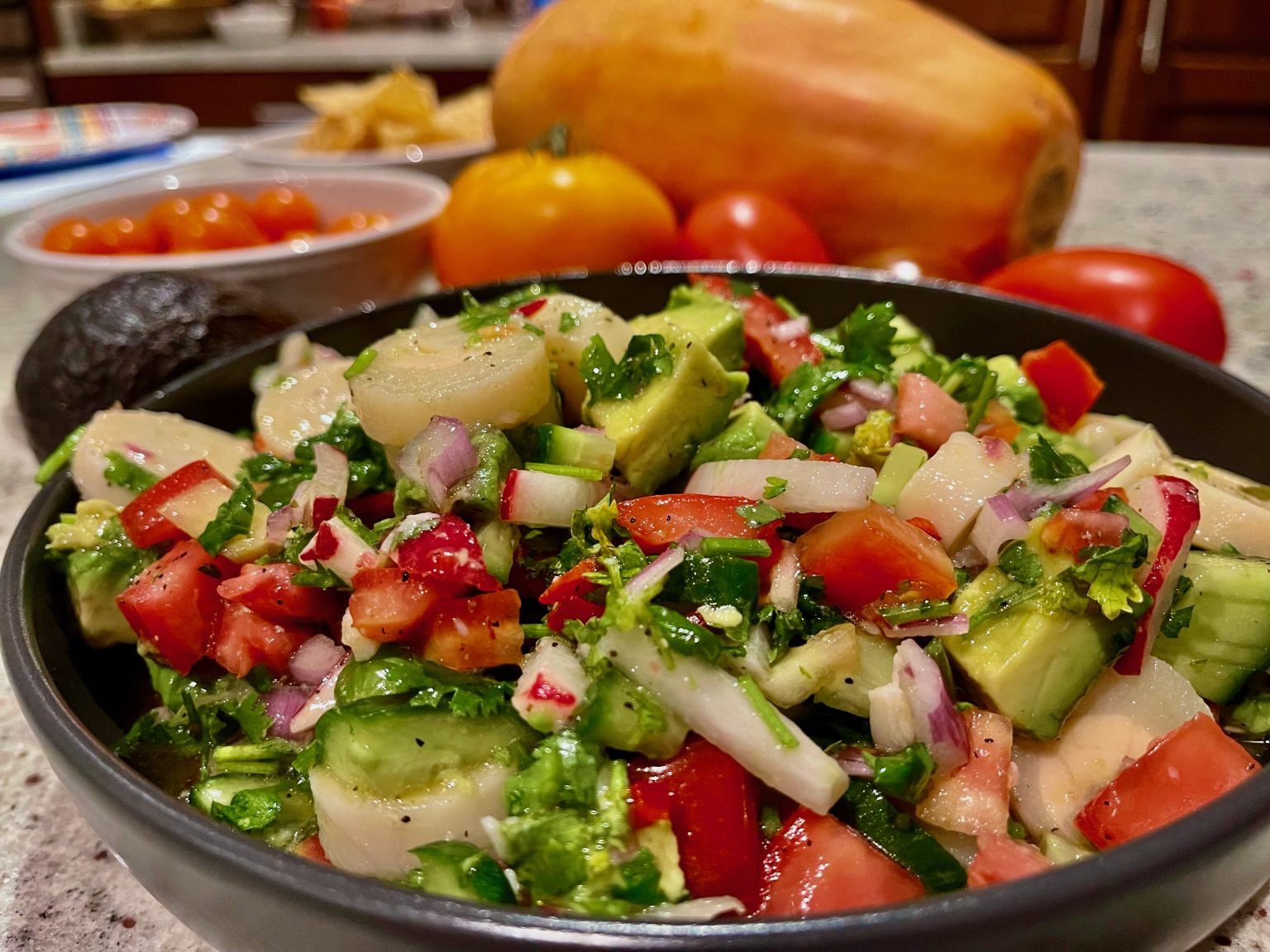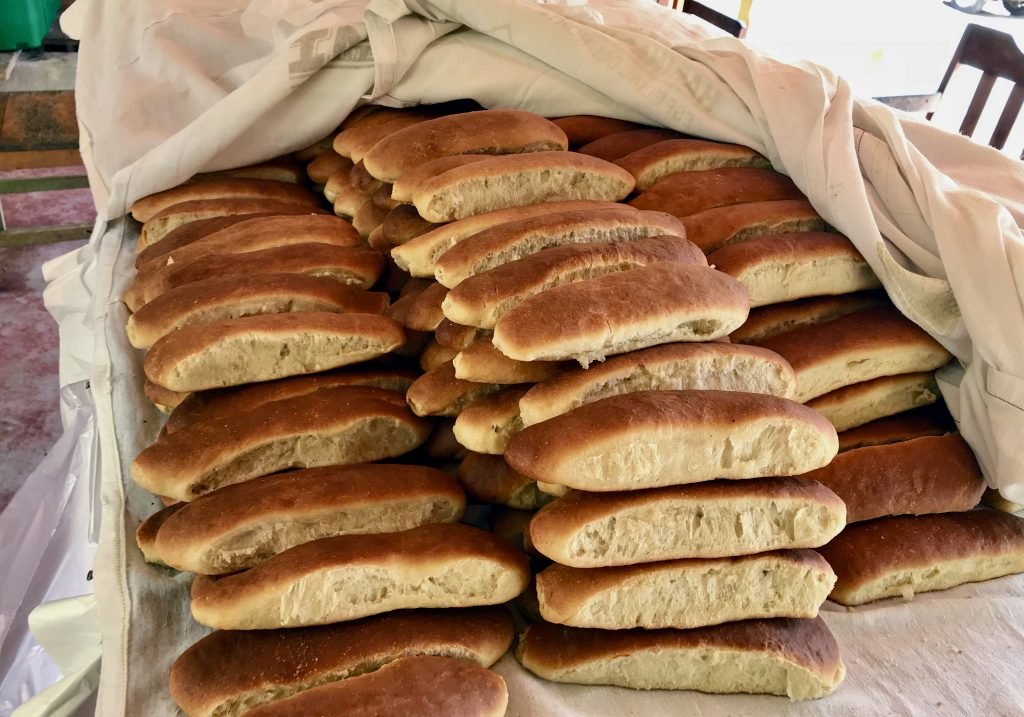Hearts Of Palm Farm & Ceviche
A few years ago, while visiting Peru on business, a small group of us flew into the farmland regions near Tarapoto, Peru. We traveled by pickup trucks over winding mountain roads into the valley beyond.
Distant waterfalls cascaded down the mountain sides with the shimmering water cutting through the lush green landscape.
Various tropical flowers, in bright shades of yellow, orange and red, dotted the dense green landscape.
Just beyond a turn in the road, we encountered a group of huts with a roadside bakery.
We sampled their sourdough breads baked that morning in a traditional clay oven which was still smoldering just a few feet away. That in itself would have made the trip worthwhile
Once in the valley, our small caravan came upon the palm farm. We needed to cross a tributary of the Amazon river to get to the farm. The first truck advanced slowly, with water lapping at the side doors, as we anxiously waited in the second truck before slowly proceeding into the water. Needless to say, the angst was unwarranted–we easily crossed onto the farm which was teeming with young palm trees in neat rows.
A half mile or so in, the caravan stopped to meet the farmer and learn about hearts of palm harvesting. Although it was December, the temperature was close to 100 degrees and the light clothes we were wearing felt like they were melting off in the sticky, wet, humidity.
As beads of sweat trickled off us, the farmer calmly and expertly trimmed a palm frond down to the heart. Harvesting hearts of palm requires careful dexterity and thick leather gloves to protect hands from long thorns that can pierce the skin from many angles. The primary tool for harvesting is a very sharp machete-type blade for detailed skinning of the outer stalk in order to reveal the succulent inner heart.
This is the “piyuayo” peach palm, a sustainable variety which regrows every two to three years. Next to plantain, the peach palm is the most significant crop in the region with 80% of the farmers growing them. It is a significant contributor to a sustainable agroforestry system.
After witnessing the demonstration, we proceeded to another part of the farm where star fruit, cinnamon and acai berries were grown, among other tropical fruits and spices. Star fruit, fresh off the tree, was sweet and juicy, comparable to the best of tropical fruits.
One of the inspirations I came away with from this trip to the Amazon was a hearts of palm ceviche. Palm hearts, local peppers, avocado and onions were marinated in lime juice with chiles and herbs. Refreshing and bursting with flavor, this dish adds life to any meal as a snack, salad or side. Here in the US, hearts of palm are available in jars or cans. When shopping, I look for certified organic or fair trade.
Hearts of Palm Ceviche Recipe
Makes 4-6 servings
Ingredients
1 cup hearts of palm, drained and cut into 1/4 inch slices
1/3 cup lime juice, freshly squeezed
1/3 cup red onion, finely diced
1/4 cup orange juice, freshly squeezed
1/4 cup extra virgin olive oil
1 teaspoon sea salt flakes
1/4 teaspoon freshly ground black pepper
1 1/4 cups tomato, diced
1 cup ripe, but firm avocado, peeled, pitted and diced
1 cup seedless cucumber, diced
½ cup red radish, cut in thin matchsticks
1 tablespoon Fresno chile pepper, stemmed, seeded and finely chopped (Ues aji amarillo chile if available)
1 cup fresh cilantro leaves, finely chopped
Directions
In a medium bowl, gently toss hearts of palm, lime juice, olive oil, salt and pepper. Cover and refrigerate for at least 30 minutes, ideally, marinate for 2 hours.
Remove from the refrigerator and add the tomato, avocado, cucumber, chile and cilantro. Using a spatula, fold together carefully to keep the hearts of palm from breaking.
Transfer to a plate or bowl. Serve as an appetizer, side salad or even a main dish. Garnish with plantain chips, toasted corn nuts or tortilla chips.









